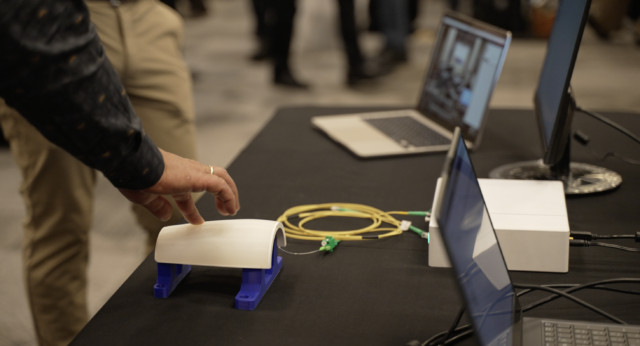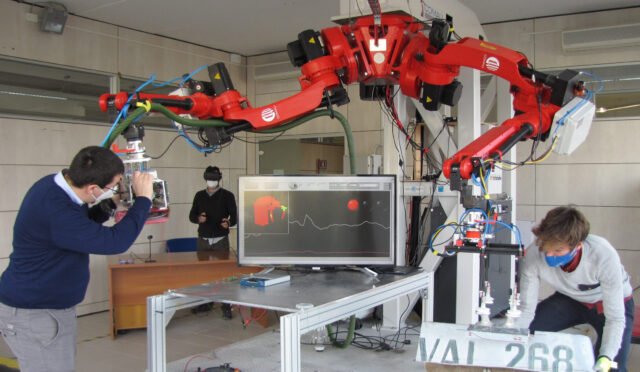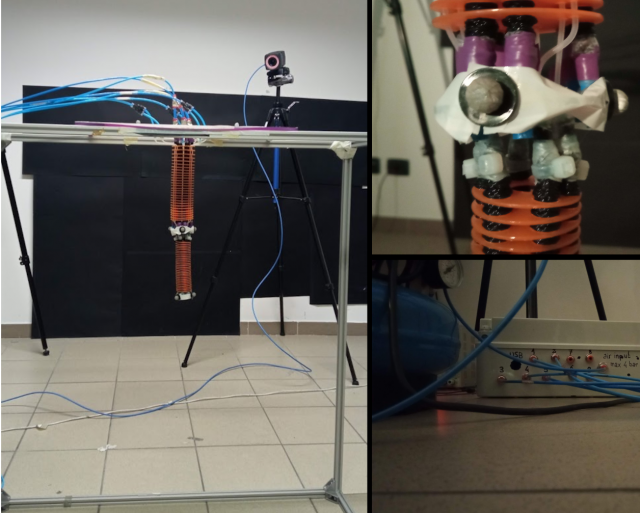HomeRobotic Database - Single Infrastructure | TERRINet


Address: Camino de los Descubrimientos,
41092 Sevilla, Spain
Website
https://grvc.us.es/
Scientific Responsible
Anibal Ollero
About
The Robotics, Vision and Control Group (GRVC, https://grvc.us.es/) is one of the most relevant laboratories in aerial robotics. GRVC is currently composed of more than 75 members with heterogeneous and synergetic engineering background and skills (aeronautics, mechatronics, computer science, telecommunication, electronics, mechanical engineering) with long tradition in aerial robotics. In the last 10 years the GRVC researchers have led or participated in more than 75 projects in a variety of topics , including 20 Framework Program European projects (leading 5) and receiving more than 21 Million euros of external funding. Currently, it is participating in 13 active H2020 projects.
The GRVC head, Anibal Ollero, has recently obtained the European Research Council (ERC) Advanced Grant GRIFFIN (General compliant aerial Robotic manipulation system Integrating Fixed and Flapping wings to increase range and safety) on new aerial robotic systems with unprecedented flying, perching and manipulation capabilities.
In the last 5 years the GRVC members of the Group have authored more than 170 publications, including about 60 papers in SCR Journals. Moreover, the members of the Group have authored or edited 20 books.
The GRVC researchers have been distinguished with 19 national and international awards. In the last 10 years the GRVC has presented 16 Thesis that have obtained 6 awards up to now.
The most important fields of research and innovation of the group, funded by the European Comission, companies, the Spanish Research Programme and Regional Research Programme, are:
- Aerial Robotics
- Unmanned and Autonomous Vehicles and Systems
- Robotics for aircraft manufacturing and other manufacturing applications
- Distributed systems and wireless sensors and actuator networks
Presentation of platforms
Available platforms
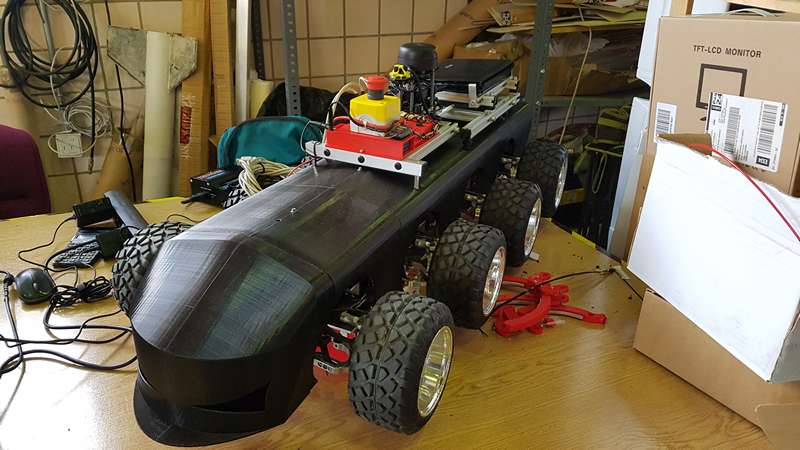
8×8 AGV
A self-designed 8×8 AGV. Each wheel has an independent traction and direction, these features make the vehicle capable of move in almost any environment. It is controlled by a Pixhawk(Px4) autopilot. His design is thought out to can hold a variety of payload, for example a lidar or a terabee laser sensor. Up to 6kg can be carried.
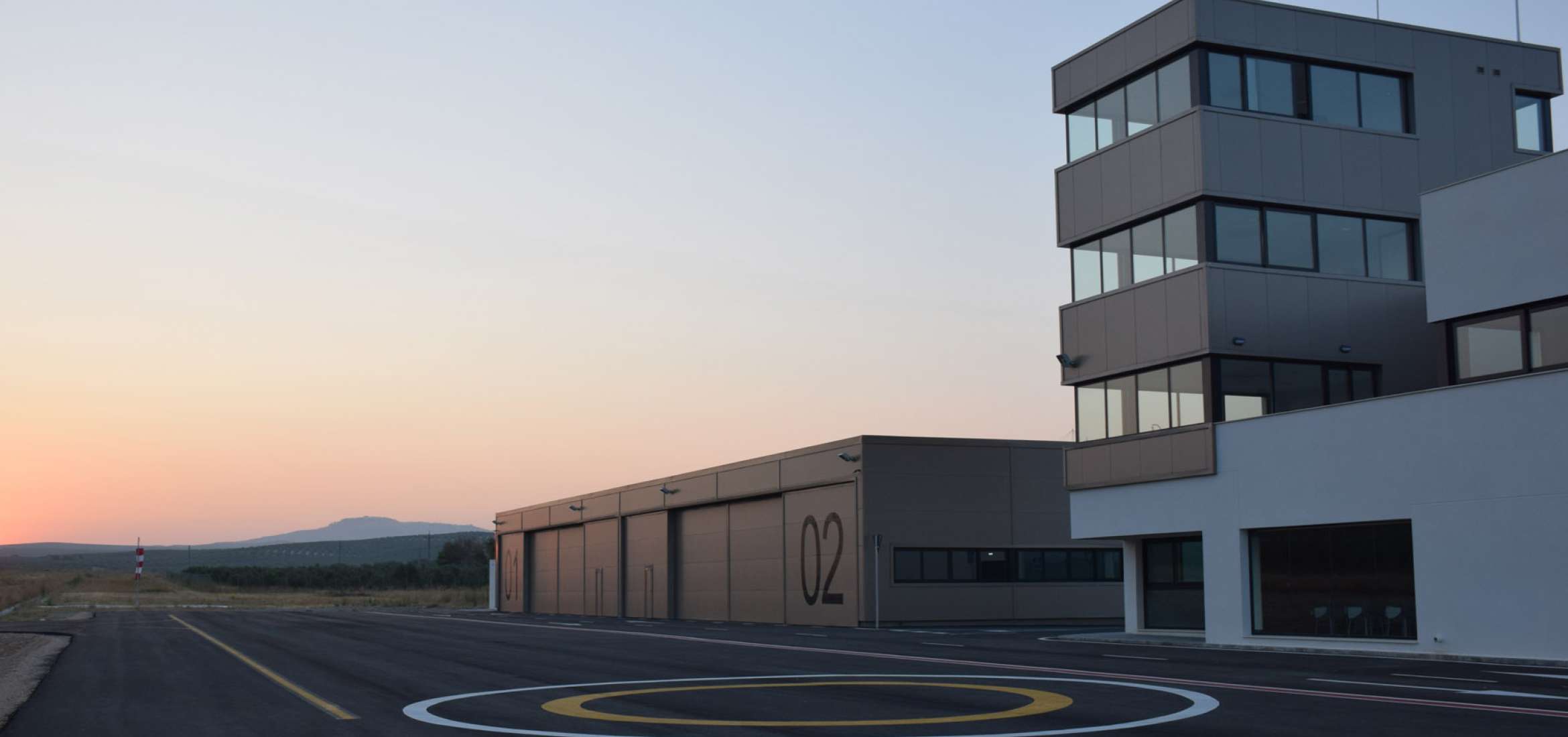
ATLAS
ATLAS (Air Traffic Laboratory for Advanced Unmanned Systems) is a Test Flight Centre located in Villacarrillo (Jaen) which offers the international aerospace community an aerodrome equipped with excellent technological-scientific facilities and airspace ideally suited to the development of experimental flights with unmanned aerial vehicles (UAS/RPAS). The ATLAS Centre holds the first facilities in Spain exclusively dedicated to testing light and tactical Unmanned Aircraft System (UAS) or Remotely Piloted Aircraft Systems RPAS.

Bobcat
A commercial 4×4 gasoline Bobcat 2200 vehicle. Modified to remotely control speed and turn. It has a 2D lidar installed and, thanks to the big size of the system, no weight restriction for the payload. It can operate in any kind of environment.
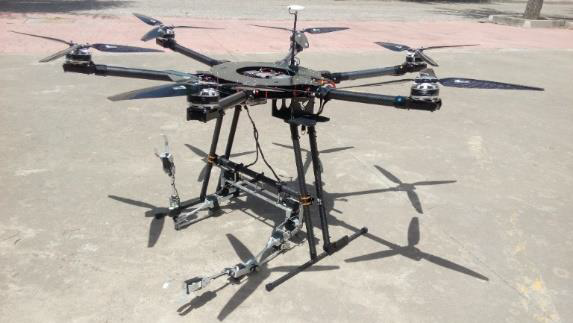
Darius
Self-designed hexacopter, designed for being able to accomplish a variety of tasks. It can be controlled with two different types of autopilots: Pixhawk (Px4) and Naza V3. It can carry up to 8kg of payload, including robotic arms. It is also foldable.

DJI F550
Comercial DJI hexacopter. Much smaller than the others, it can only carry GPS and little cameras. The autopilot is a Pixhawk (Px4) and it is programmed with ROS/Ubuntu.

DJI Matrice 600
The Matrice 600 (M600) is a flying platform designed for professional aerial photography and industrial applications. It is built to closely integrate with a host of powerful DJI technologies, including the A3 flight controller, Lightbridge 2 transmission system, Intelligent Batteries and Battery Management system, for maximum performance and quick setup. This excellent features make it capable of use self-designed robotic arms as payload.

MBZIRC Hexarotor
Self-designed hexarotor, controlled with a Pixhawk (Px4) autopilot. An intel Nuc (I5) is also embedded for more computational capability. It works with ROS and it can be simulated with Gazebo. Payload includes among others: laser sensors, GPS, stereo camera and an electromagnet. Self-designed robotics arms are also used in this platform. This provides a multitask aerial robot.

Pioneer 3-AT
The PIONEER 3-AT is a highly versatile four-wheel drive robotic platform. Powerful, easy to use reliable, flexible, P3-AT is a popular team performer for outdoor or rough-terrain projects. It offers an embedded computer option, opening the way for onboard vision processing, Ethernet-based communications, laser, DGPS, and other autonomous functions. It is controlled with ROS/Ubuntu using a laptop.
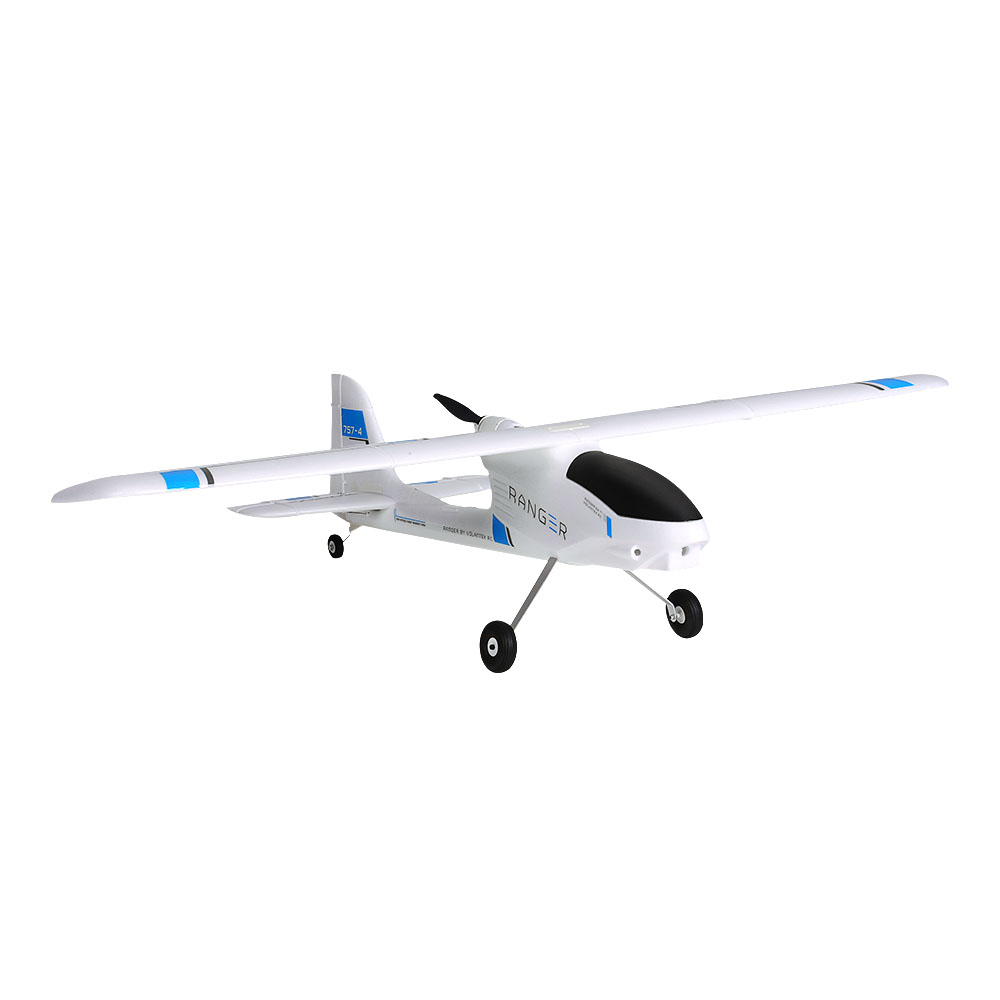
Ranger
A commercial fixed wing drone specially designed for FPV flights. It offers a lot of space inside the body for FPV equipment and cameras. It is compatible with most of the camera supports models. A perfect system for FPV flights and video recording. It can also carry a lot of payload compared with other models of the same weight.
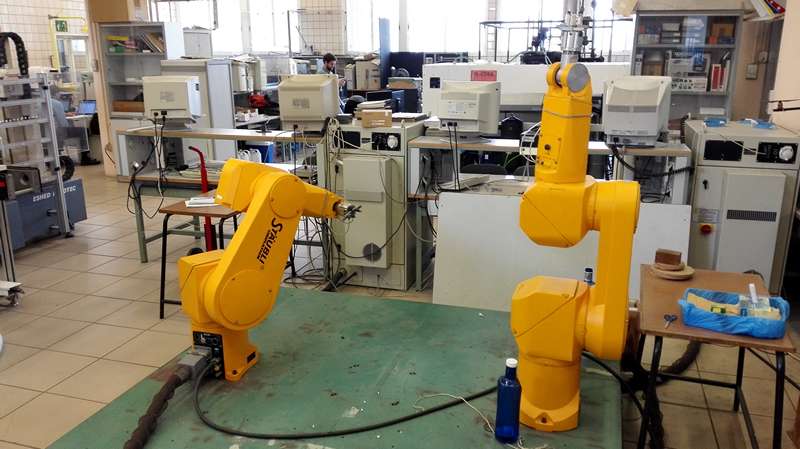
RX-90
Two commercial RX-90 robotic arms. They can cooperate with each other to do different tasks. Controlled with Ubuntu/ROS thanks to self-designed programs.
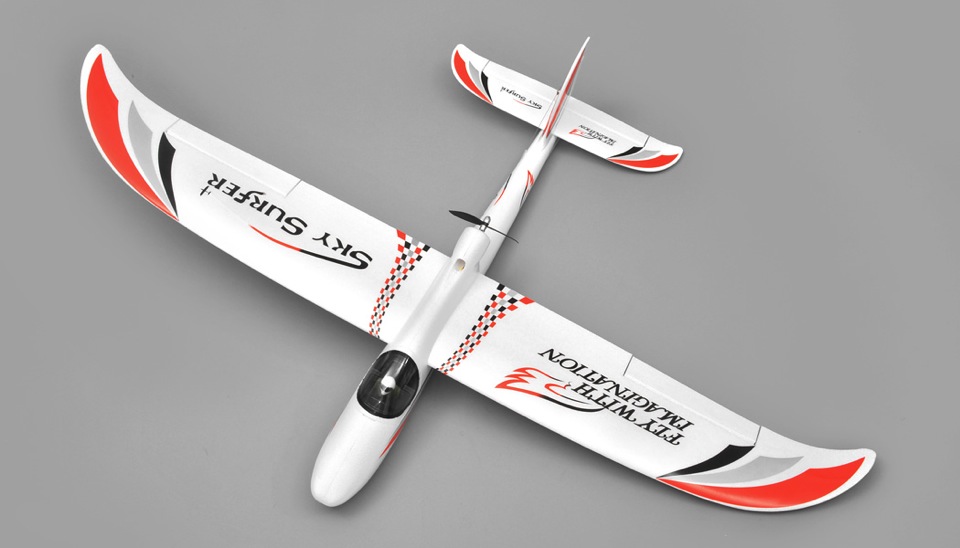
Skysurfer
First person view system, thought-out for training UAV pilots. If offers a great manoeuvrability. This is a four-channel model featuring rudder, elevator, ailerons and ESC motor control. The model can be used as a first trainer thanks to its forgiving nature and stability, it’s also super durable due to the EPOFLEXY material it’s made from.
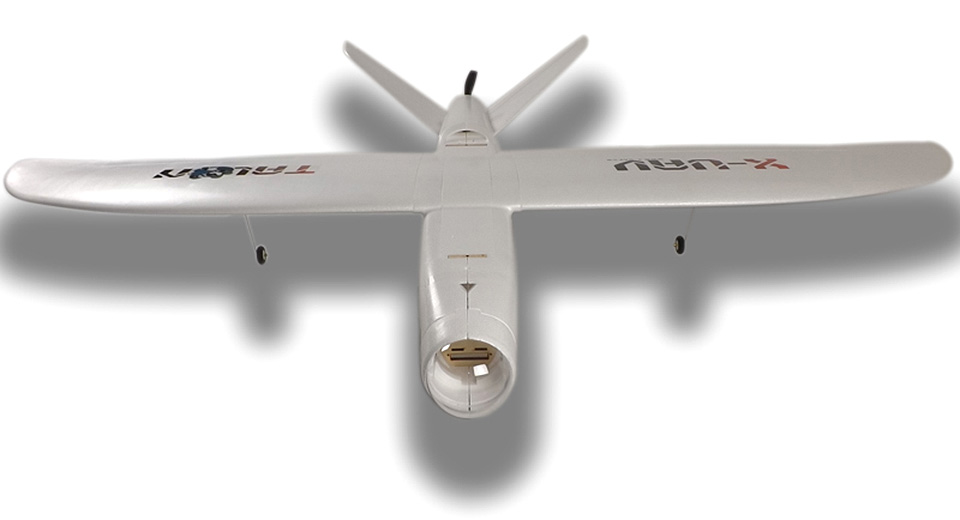
Talon
Features a strong foam body internally reinforced with carbon fibre, parachute recovery and belly landing available, 24 megapixel camera with many other sensor options, automatic lens cover door, easy hand-launch, 5 minutes setup time, 2 hours of endurance, easy to transport and +30km link range. It is controlled with a pixhawk autopilot ¡ with an embedded Odroid, but it also has a Raspberry on board. The camera is a Xiaomi Yi Cenital.
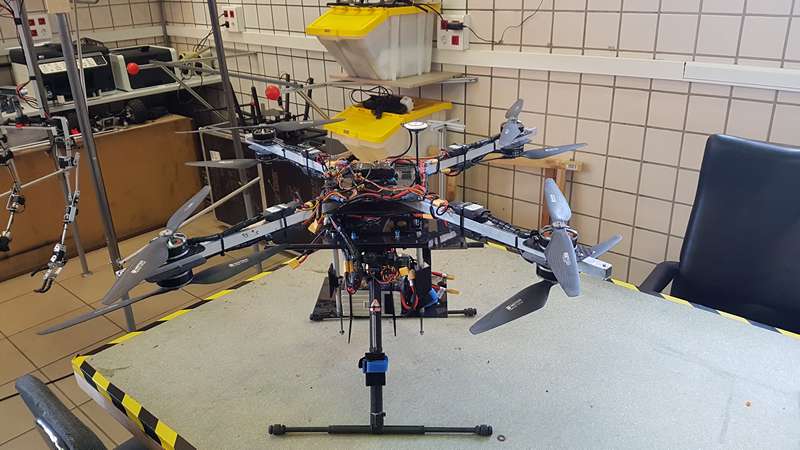
AMUSE
Self-designed octocopter controlled by a pixhawk autopilot with an Intel Nuc (I5) for extra computational capabilities. It also has a Jexton TX1 GPU and a velodyne 3D laser as extra payload. It is designed for accomplish different task, using different types of sensors, like stereo cameras, laser sensors, GPS, altimeters, etc.
Vicon Indoor Testbed
Indoor testbed for the assessment and validation of air traffic automation techniques and multivehicle systems (both coordination and cooperation). This testbed is based on an indoor positioning system that uses 20 VICON cameras. This system can calculate the position and attitude of any moving object within the volume of the testbed (15x15x5 m) in real time (with an update rate of up to 500 Hz). CATEC has 10 light unmanned quadrotors that can be used to emulate the trajectory of any type of aircraft. These rotorcrafts can carry up to 500 g of payload. In addition, CATEC has 4 coaxial quadrotors with significantly higher payload capacity up to 2 kg which are used to test aerial manipulation techniques. Finally, the testbed is integrated with a software development environment which allows the simulation of the algorithms before they are tested in within the testbed.


